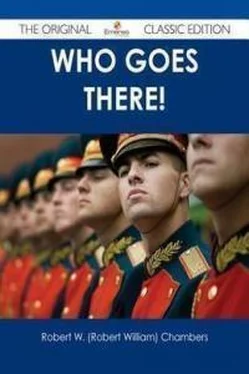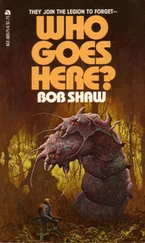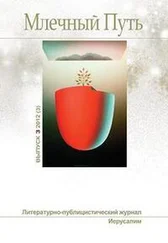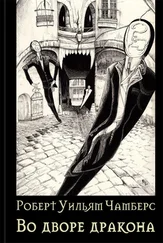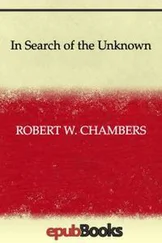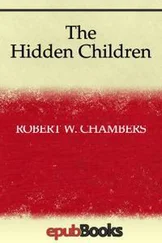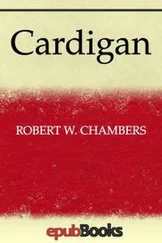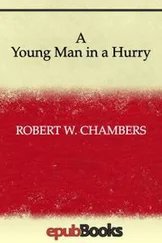Роберт Чамберс - Who Goes There!
Здесь есть возможность читать онлайн «Роберт Чамберс - Who Goes There!» весь текст электронной книги совершенно бесплатно (целиком полную версию без сокращений). В некоторых случаях можно слушать аудио, скачать через торрент в формате fb2 и присутствует краткое содержание. Год выпуска: 2014, Издательство: epubBooks Classics, Жанр: Историческая проза, на английском языке. Описание произведения, (предисловие) а так же отзывы посетителей доступны на портале библиотеки ЛибКат.
- Название:Who Goes There!
- Автор:
- Издательство:epubBooks Classics
- Жанр:
- Год:2014
- ISBN:нет данных
- Рейтинг книги:4 / 5. Голосов: 1
-
Избранное:Добавить в избранное
- Отзывы:
-
Ваша оценка:
- 80
- 1
- 2
- 3
- 4
- 5
Who Goes There!: краткое содержание, описание и аннотация
Предлагаем к чтению аннотацию, описание, краткое содержание или предисловие (зависит от того, что написал сам автор книги «Who Goes There!»). Если вы не нашли необходимую информацию о книге — напишите в комментариях, мы постараемся отыскать её.
Who Goes There! — читать онлайн бесплатно полную книгу (весь текст) целиком
Ниже представлен текст книги, разбитый по страницам. Система сохранения места последней прочитанной страницы, позволяет с удобством читать онлайн бесплатно книгу «Who Goes There!», без необходимости каждый раз заново искать на чём Вы остановились. Поставьте закладку, и сможете в любой момент перейти на страницу, на которой закончили чтение.
Интервал:
Закладка:
The first seemed to be a hasty study from some artist's sketch book. It appeared to be a roughly executed and hasty sketch of several rather oddly shaped trees—a mere note jotted down to record the impression of the moment—trees, a foreland, a flight of little hedge birds.
On it, in English, the artist had written "Sunset." Indeed, the declining and somewhat archaic sun on the horizon and the obviously evening flight of the birds seemed to render the label unnecessary.
For a long while Guild stood studying it in the light of the stateroom ceiling lamp. And what continually arrested his attention and perplexed him was the unusual shapes of the trees and the un–birdlike flight of the birds. Also artists don't sketch on such paper.
Now and then he looked across at Karen with an inscrutable expression, and each time he looked at her his face seemed to grow more rigid and his set jaws more inflexible.
The girl crouched in the corner of the lounge, her face covered by both hands and pressed against the pillows.
He did not speak to her. Presently he turned to the next paper. It bore the rough sketch of a fish, and was numbered 2.
It was a wretched drawing, intended, evidently, to resemble an old pike and three young ones. What it meant he had no idea. He passed to the third and last sheet of paper, and it instantly held his attention.
On it was depicted a figure, which he supposed was the artist's idea of a Japanese dancing girl. She held a fan in her left hand. Over her extended right hand a butterfly hovered.
But what interested and concentrated Guild's attention was not the very amateurish drawing, but the series of silly decorations on the paper above her head—a number of quartered circles inclosed in squares and oblongs.
As decorations they meant nothing, indicated nothing, except that the intellect responsible for them must be a meagre one.
But as a cipher message these doubly bisected circles promised anything.
This is what Guild saw and what caused him to seat himself on the sofa beside the girl who still lay huddled over her pillows, her face hidden in her hands.
Seated, he drew out the portfolio containing his letters and a notebook. Then, slipping a lead–pencil from the leather socket and tearing out a sheet of paper, he started work—using the leather–backed book for a support—on a cipher which looked to be impossible. Yet, all ciphers are solved by the same method. And he knew it.
The first thing he did was to find his "numbers" in the mass of quartered circles. And, working steadily, swiftly, but intelligently, he had, in the course of an hour, discovered, separated and jotted down, nine of the quartered disks which he believed to represent numbers; and one extra disk which he supposed to be zero. And he numbered each symbol accordingly: merely eliminating all lines except those bisecting the smaller circles. This gave him in order
The next thing to do was to find what letters those numbers, or combinations of numbers, represented.
For a while he tried English, but arrived at no convincing result. So he tried German, first making a list of the letters which were likely to occur most frequently in the written language and then trying them with the symbols which occurred most frequently in the manuscript before him.
He found that the first symbol represented the figures 21.
The twenty–first letter of the alphabet is u . He wrote it.
The next symbol was
for which he substituted the figures 14. The fourteenth letter of the alphabet is n . He had, so far, two letters, u and n , to experiment with.
He had sat for several minutes gazing absently at these two letters when, like a shot, it struck him that the French word for the number, one, was spelled un . Could the key of the cipher be French? He separated and jotted down the next combination of disks
which gave him the numbers 19. The nineteenth letter of the alphabet is s . He wrote it.
The next symbol was
or the figure 9. The ninth letter of the alphabet is i .
The next symbol was
which, translated, gave him 24. The twenty–fourth letter of the alphabet is x .
He now had the letters s–i–x . And no sooner had he written them in order than the word six stared him in the face and he flushed with pure excitement.
He had now two words, un and six . The chances were that he was somewhere on the right track and he fell to work with a concentration and ardour which left him oblivious to everything else—to time and place, and to the silent, motionless little figure huddled over the pillows beside him.
A Fragment from Guild's Notebook
At the end of an hour—checked twice—but finally overcoming apparent defeat, and always following the same method of deduction, he came to an end of his symbols, and he found the leaf from his notebook was covered with the following words in order of symbol:
Un, six douze cinq cinq vingt, douze quinz' vingt–un sept eight, nineteen vingt trois nine douze douze twenty–five, eight cinq trois eight vingt, six quinze douze douze quinze vingt–trois, deux nine eighteen quatre nineteen.
For these numerals spelled out capriciously in either abbreviated French or English he substituted numbers in the sequence given:
"1—6—12—5—5—20—12—15—21—7—8—19
—23—9—12—12—25—8—5—3—8—20—6—15
—12—12—15—23—2—9—18—4—19."
Then for the figure 1 he wrote the first letter of the alphabet— A . For the number six he wrote the sixth letter of the alphabet F . For the number 12, the twelfth letter of the alphabet L .
And when he had written letters for every figure in order given he had on his sheet of paper
A FLEETLOUGHSWILLYHECHTFOLLOW
BIRDS
After a while he separated the words A , Fleet , Follow , and Birds , leaving the unintelligible sequence of letters LOUGHSWILLYHECHT.
Out of this, for a long while, he could make nothing, until, by chance, taking the last five letters together, it suddenly occurred to him that the German word for pike was HECHT. Then, in a flash, he remembered the badly drawn picture of a pike and its young. Pike or Hecht, that was one of the words in all probability. But what other word the word Hecht represented he could not imagine.
He looked at his notebook again. The letters remaining were LOUGHSWILLY. They meant absolutely nothing in any language he had even heard of. He studied what he already had—A Fleet (Blank) Pike Follow Birds. A pike follow Birds — birds —and swift as lightning a thought struck him which set him tingling to his finger–tips: somewhere in that rough, hasty, and apparently innocent sketch in which oddly shaped trees and a line of little birds figured, lay the key to the whole thing.
He felt it, he knew it. He spread out the drawing on his knees and studied it with terrible concentration, conscious somehow or other that something about it, something in it, was vaguely familiar to him. What? Had he ever before seen another sketch by the same hand? He could not recollect. It was like millions of rough, hasty sketches jotted down by painters as notes for their own guidance only and not for others to see.
What was there about it unusual? The trees? The shapes of the trees. Ah! he was getting nearer the goal—he realized it, felt it, and, balked, fell into a mental rage for a moment.
Then his habitual self–command returned; he squared his jaws, gazed grimly at the trees, and forced himself once more to answer his own questions.
The shapes of the trees, then, were unusual. He had gotten that far. What was unusual in their shapes? The trunks and branches? No. The foliage. No. The outline!
Читать дальшеИнтервал:
Закладка:
Похожие книги на «Who Goes There!»
Представляем Вашему вниманию похожие книги на «Who Goes There!» списком для выбора. Мы отобрали схожую по названию и смыслу литературу в надежде предоставить читателям больше вариантов отыскать новые, интересные, ещё непрочитанные произведения.
Обсуждение, отзывы о книге «Who Goes There!» и просто собственные мнения читателей. Оставьте ваши комментарии, напишите, что Вы думаете о произведении, его смысле или главных героях. Укажите что конкретно понравилось, а что нет, и почему Вы так считаете.
